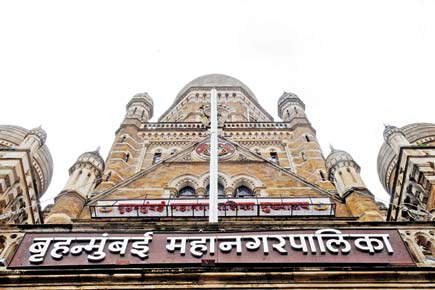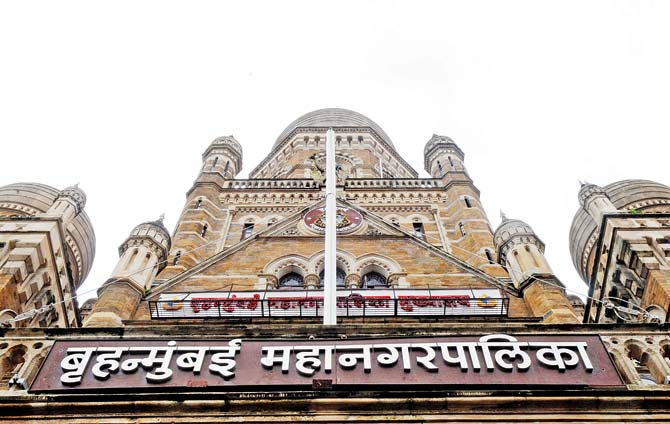One year from now, elections will be held for Asia’s wealthiest civic body, the Brihanmumbai Municipal Corporation. However, over the past year, political dynamics have changed and chemistry between allies has transformed

One year from now, elections will be held for Asia’s wealthiest civic body, the Brihanmumbai Municipal Corporation. However, over the past year, political dynamics have changed and chemistry between allies has transformed. The BJP upped the ante with its success in the Kalyan Dombivli Municipal Corporation, where it went from nine seats to 42.

Over the past year, the chemistry between political allies has changed. File pic
Wary partners
The Shiv Sena is wary of the intentions of the BJP. The Congress, with its city chief, Sanjay Nirupam, and NCP with Sachin Ahir, are trying to give their parties a leg-up. Both parties suffered a setback in the Assembly and Lok Sabha polls. For the MNS, the BMC election is going to be a fight for existence.
In the civic body, the ruling allies Shiv Sena and BJP are at loggerheads on various issues, from the meat ban (supported by BJP and opposed by Sena) to the Smart City debate.
The NCP and Congress stand united and, with the vocal MNS and Samajwadi Party, the opposition stands strong. However, what happens inside the standing committee meetings and in the house of BMC mostly remains inside, and does not impact voters. Unlike at the Lok Sabha, the BMC proceedings are not telecast live.
Meanwhile, the BJP and Shiv Sena, in all likelihood, will go their own ways. It seems that the BJP is expecting to repeat what it did in the KDMC. It is the largest party in Mumbai with the highest number of MLAs, followed by the Shiv Sena.
Vote-bank politics
What works for the BJP is that its vote banks — Gujarati and North Indian voters — remain intact, but unlike the Shiv Sena, the party doesn’t have a grassroots network. The Sena has an active network of shakhas, and corporation elections are won with on-the-ground support. People also vote not just for the party or the flag — often, voters swing in favour of the candidate. Hence, there are many independents who represent wards in the BMC.
The Sena’s voter base — the Marathi belt — was divided in 2012, owing to the emergence of the MNS. However, this time the Sena expects these votes to come to it in abundance, with the MNS losing its strongholds.
Also in Mumbai, there are large vote banks from the Konkan region — these voters have always supported the Sena. Narayan Rane and other leaders had eaten into this vote share in the past. But even these votes are expected to swing towards the Sena, as is evident by Rane’s loss in Bandra (east) during the recent bypolls.
On the other hand, the BJP is trying to target the Marathi vote bank via its city unit chief, Ashish Shelar. Having two party group leaders from the Gujarati community —first Dilip Patel, then Manoj Kotak — the BJP also wants to keep its Gujarati vote bank intact.
The Congress, with a north Indian chief, Sanjay Nirupam, is trying two tactics. First, it wants to attract north Indians who deserted the party in the last two major elections. Second, with former Sainik Nirupam on board, the party has been able to target the ruling party in the BMC.
Smaller parties try to get a foothold
There are smaller but significant parties too, like the Samajwadi Party (SP), which in the last four years has made significant impact inside the BMC. However, these elections will prove how much it has impacted its possible voters.
New entrants like AIMIM, which in its Mumbai debut won one seat and impacted many others in the Muslim belt, is a direct threat to the SP and the Congress party.
 Subscribe today by clicking the link and stay updated with the latest news!" Click here!
Subscribe today by clicking the link and stay updated with the latest news!" Click here!









